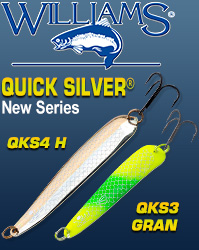Post Spawn / Summer Patterns
Fishing season is here! Opening day has come and gone and the pre-spawn big fish bite is gone. Even picking a few fish off the beds and releasing them to spawn again is gone. You go back to these same areas, and after 50 casts you end up with zilch. You stand there in the boat…….rod at your side pointing towards the water…. drifting…..staring……adjust your hat…..slap a bug on your neck……thinking “now what?”
I know you are doing these things because I’ve been there too many times to count. After years of personal research, I’ve come up with some techniques that work for me. But first, let us examine the bass and the stages they go through after the spawn. During May and early June when water temps reach 62 to 67 degrees, bass will spawn. Males first will move up to make the nests. Around the next full and new moons, females will move up and lay their eggs. Male bass will hang around to protect the eggs and small fry. The females will soon move off and rest from the riggers of spawning. Some females will stay shallow but bury themselves deep in cover, while others will move out to the first drop off and suspend for a while.
Now how do you catch them? Now is the time to have fun with top waters. Male bass will stay shallow and protect the fry for a couple of weeks. Male bass usually run a little smaller than the females. Most run 12 to 16 inches in length. Cruise the shallows looking for balls or pods of fry. They look like small schools of a thousand or so minnows, about an inch long. Poppers and buzz baits and floating minnow baits all work well and are exciting when the males blow up on them. Soft jerk baits rigged either Texas style or wacky style weightless, should be casted out and left to sink slowly through the pod of fry and will trigger vicious strikes. This bite usually last for a few weeks.
How about big fish? Good Luck! This is one of the worst times to target big fish. The good news is; with the warming waters of summer, the feeding urge is brought on more often. Fish are cold blooded and their metabolism is increased as the water warms. A higher metabolism means their food is digested faster, resulting in the need to feed more often. The bad news is; the waters are plump full of small blue gills and minnow and such, which compete with your attempts to lure the bass to your hook. For big bass that stay shallow, look for mats of weed growth, with a little depth near them. Lilly pads, mill foil, or algae, create a canopy of cover to make them feel secure. I use weedless topwaters on the really thick stuff. Weedless frogs or rats are really fun. Remember, don’t set the hook on the splash, wait to see if your fish has the bait. If he missed the bait, let it sit, they often come back to hit it again. When you see your line moving through the weeds, give it a two second count, and then reef back and cross their eyes. For this type of presentation, braided line is my choice, with a heavy action rod and bait casting reel. Swim jigs and weedless jerk baits or plastics work well in the weed pockets or after the weeds thin out a little.
Deeper fish can also be caught with top waters. Baits like poppers, buzz baits or walking stick baits can catch big fish, early or late in the day. Look for humps or irregular features in the outside weed line. Swim jigs, crank baits, jigs and plastics will catch big fish now, on the weed line, but don’t expect those fish to jump in the boat. Those 50 fish days are gone for a while. Focus on one at a time.
Last but not least, there are piers. Shallow fish will often move under piers, boat lifts, and pontoon boats. Most fish are small, but now and then you can pull a big fish out of this type of cover. Learn how to skip a bait. Cast a slight angle to the water, like you are skipping a stone. This takes practice to become accurate, but a sure fire technique for catching these shallow fish. Plastics like jerk baits, tubes, and craws work well and skip well. Rig them weedless so that you don’t get hung up so often. After casting, let the bait sink to the bottom, let it sit for a few seconds, twitch it a couple of times and if a fish does not pick it up, reel up and move on to the next pier. No playing the fish now, if you get them hooked, get them out of the cover, get yourself out towards open water, fight the fish out there and get it the boat.
If you are fishing a river system, depleted oxygen levels in the back waters will push bass out towards main river current. If the back waters has a spring or incoming creek, then the oxygen levels may sustain fish a bit longer. Current breaks, such as logs, rip rap, or piers are good targets. Smallies will also reside on wing damns or closing damns. Don’t forget patches of weed growth, just off current and slack water areas.
All is not lost this time of year for bass; you just have to work a little harder to get them. Try these techniques for some consistent bass action, keep a few for the pan if you like, but catch and release as often as possible for the generations of anglers to come.









